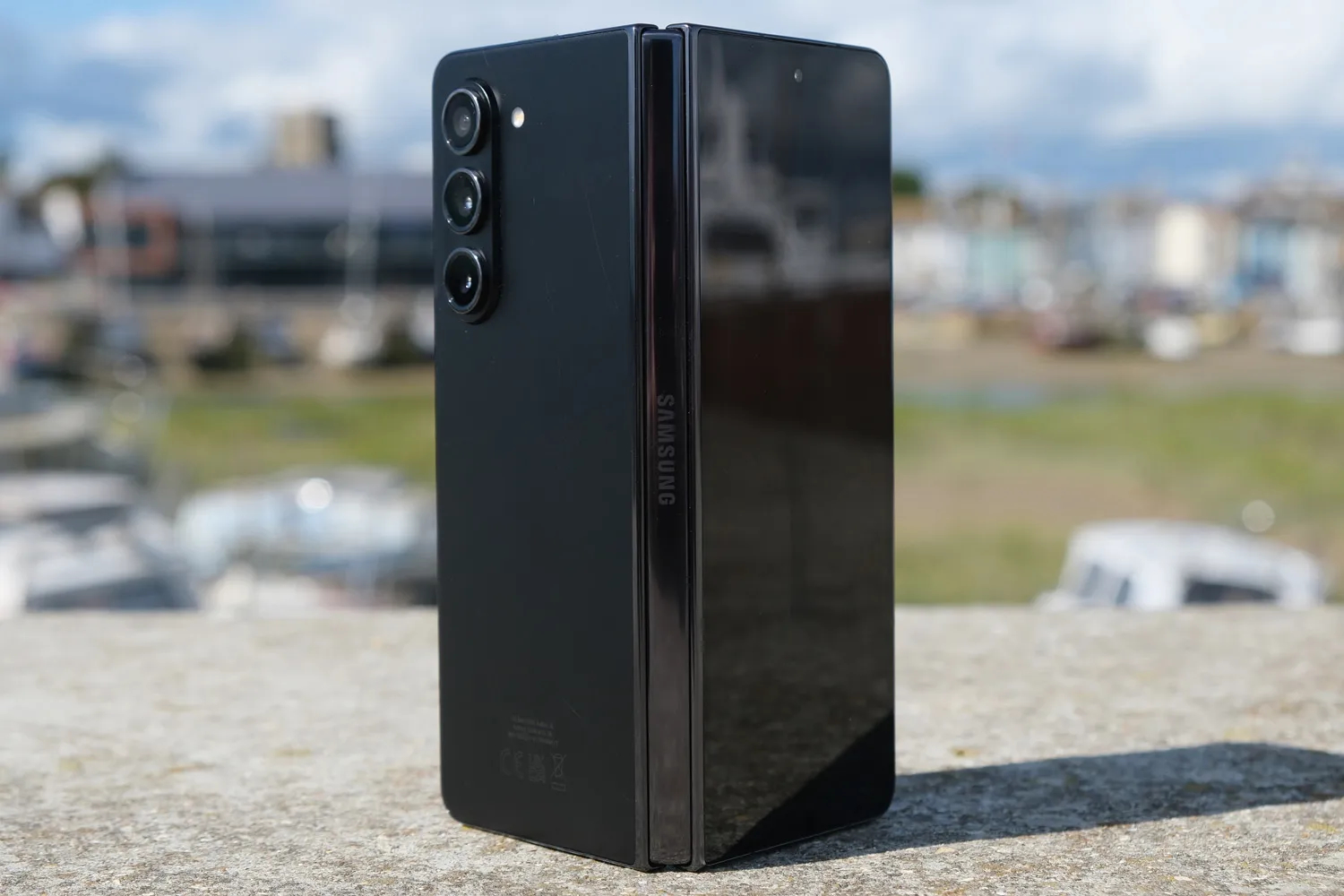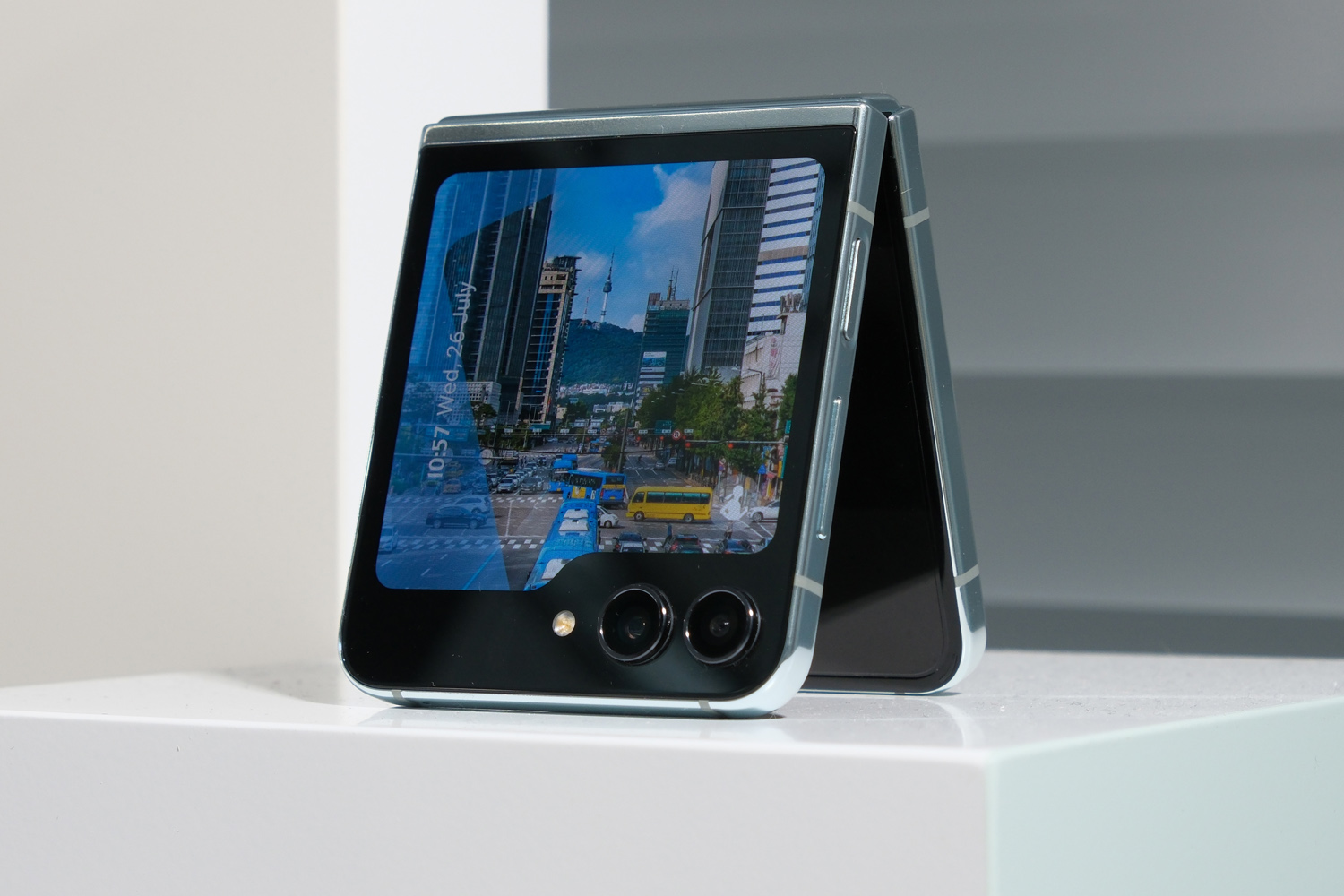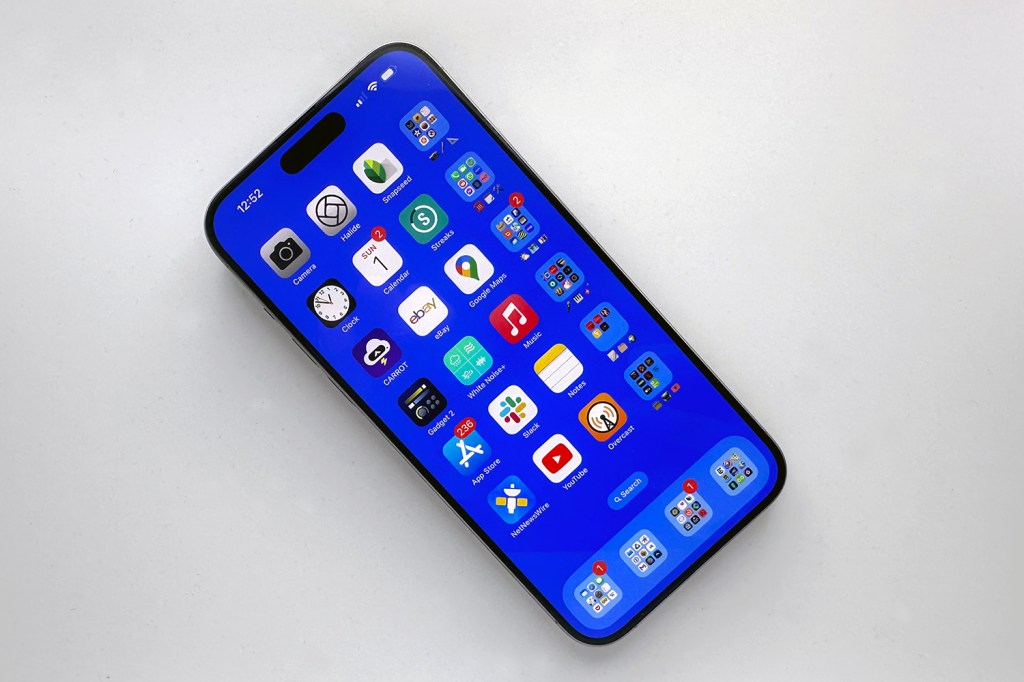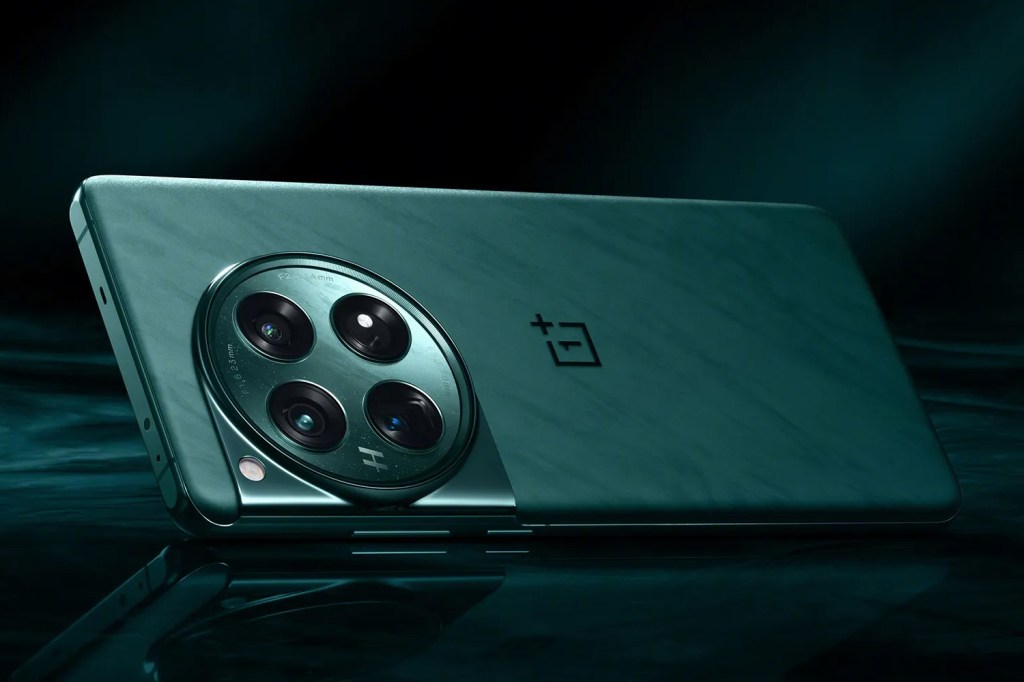Best upcoming phones: future phones for 2024
Best upcoming phones: future phones for 2024
From affordable phones to fresh flagships and folding phones, there's no shortage of exciting upcoming phones on the horizon
Like to follow every smartphone launch like a hawk? Your diary must be busy. From affordable phones and fresh flagships to foldables, there’s a constant stream of shiny new handsets coming your way over the next twelve months.
From likely launches and rumoured reveals to confirmed releases, all the models listed below will keep your smartphone knowledge well ahead of the curve. We’ve also summarised the major smartphone announcements from recent months, with links to our reviews of the big hitters. Our regularly updated list has all the best upcoming phones we expect to see.
Here’s our guide to the best upcoming phones set to land soon.
All the best upcoming phones we’re expecting soon
Samsung Galaxy Z Fold 6 / Flip 6


With the Galaxy S24 series arriving in January 2024, a month earlier than Samsung typically like to launch its mainstream models, there was every chance the next-gen Fold and Flip folding phones would land a little sooner than anticipated too. The latest rumour has an Unpacked event being held in Paris on July 10 – two weeks earlier in the year than the previous generation.
Both devices are most certainly in the works, with leaks suggesting a tweaked design for the former that will more closely match the angular Galaxy S24 Ultra. An Ultra variant is also expected, splitting the Fold line into ‘expensive’ and ‘very expensive’. The Flip will stay standalone, if the leaks are accurate.
Camera fans may be disappointed to hear rumours are pointing to an unchanged set of sensors, while performance will surely come courtesy of a Snapdragon 8 Gen 3 CPU. The Fold will hopefully be shorter and wider than its predecessor, which was still on the skinny side compared to other book-style phones. The Flip will surely see fewer styling changes, as Samsung only debuted that oversized cover screen with last year’s Z Flip 5.

Apple iPhone 16 series
The one every Apple fan will be waiting for. The iPhone 16 line-up will almost certainly be revealed in early September 2024. The two Pro models are looking set to receive larger 6.3in and 6.9in screens and a dedicated “capture” button for content creators. The action button, which debuted on the iPhone 15 Pro, will also filter down to the standard iPhones.
A new generation of Apple silicon seems likely, as does a new version of iOS. Apple is apparently also going to go big on AI this year – just like the rest of the phone world. We’re also hoping the iPhone 15 Pro Max’s 5x telephoto lens makes its way down to the more palm-friendly iPhone 16 Pro.
September feels like a long way off right now, though. The iPhone 15 line-up is as good as it gets in Apple land today:
Apple iPhone 15 (128 GB) - Black

Google Pixel 9 series
It’s inevitable Google will introduce a new Pixel generation in 2024 – but the rumours suggest there’ll be three Pixel 9 handsets rather than two. The Pixel 9 Pro will shrink down a little, to make room for a larger Pixel 9 Pro XL – reviving a naming scheme Google hasn’t used for several years now. The Pixel 9 will be a more mainstream offering, as is tradition.
New designs with reshaped camera bars are mooted, as is a new Tensor G4 chipset. We have our fingers crossed that Qi2 charging will also make the cut. Camera hardware seems unlikely to get a big overhaul this generation – Google usually goes two years between sensor swaps – but expect the usual range of software tweaks and algorithm upgrades to keep it competitive.
Until the Pixel 9 series arrives, most likely in September, the Pixel 8 Pro remains one of our favourite smartphones. It takes stunning photos, has plenty of clever AI enhancements, and has the slickest design of any Pixel to date.
Google Pixel 8 Pro – Unlocked Android Smartphone with telephoto lens, 24-hour battery and Super Actua display – Bay, 256GB


Apple iPhone SE 4
The most affordable iPhone has been stuck in the past for multiple generations now, but that could be set to change for the fourth SE iteration. Leaks have it picking up styling similar to the iPhone 14 series, with flat sides and a 6.1in OLED screen up front. Apparently it’ll stick with a single camera at the rear, but bump the sensor’s pixel count up to 48MP – matching the iPhone 15.
Expect a notch instead of a Dynamic Island pill, and a traditional alert slider rather than an Action button. We’re almost certainly going to see USB-C connectivity instead of Lightning, too, on account of European rulings that would otherwise prevent Apple from selling it here. Whether the firm will raise the price to account for all that new hardware remains to be seen.
Apple usually introduces iPhone SE models in March. That didn’t happen in 2024, so either the next SE will wait until 2025, or launch alongside the iPhone 16 generation – which is widely expected to land in September. In the meantime, the current SE remains the cheapest way into iOS without shopping second-hand:
Apple iPhone SE (128 GB) - Midnight (3rd Generation)
Google Pixel Fold 2
As much as the Pixel Fold was an exciting introduction to foldable phones from Google, it also felt very much like a first effort device. The bezels were chunky, performance was merely OK, and stamina wasn’t very impressive. But it did deliver some fantastic rear cameras, and had a very well optimised version of Android for dual-screen setups. Google is widely expected to change the form factor for Pixel Fold 2, going taller and narrower than before to more closely match folding rivals.
Another big design change should be the rear camera module, which will swap from a device-spanning bar to a pill shape contained to one corner. A bigger capacity battery and newer generation Tensor CPU is also on the cards, but it’s unknown whether the cameras will see any serious upgrades.
An annual upgrade would see the Fold 2 make its debut at Google’s I/O event in May, but the latest rumours suggest it’ll now wait for the Pixel 9 series later in the year – and be in for a name change, too. The Pixel 9 Pro Fold sounds like a mouthful to us, but Google has done stranger things in the past…
If you can’t wait that long, the original Pixel Fold is still doing the rounds – and for less than retail price.
Google Pixel Fold, Obsidian, 256GB

OnePlus 13
It’s still early days for the next OnePlus ‘flagship killer’, with the usual release schedule pegging December as the likely reveal for the firm’s native China and a more global launch in early 2025. But that doesn’t mean there aren’t whispers doing the rounds on what to expect. A bigger battery seems to be on the cards, with 6000mAh looking significantly larger than any other mainstream mobile. A Snapdragon 8 Gen 4 chipset looks all but certain (just as soon as Qualcomm actually announces it) and subtle curves on all four sides of the AMOLED display have been suggested. Lastly, a price competitive with anything Apple or Samsung are putting out is all but certain, as is the OnePlus way.
Don’t want to wait until December for the likely reveal – or even longer for a global launch? The OnePlus 12 is still fantastic value:
OnePlus 12 5G (UK) 12GB RAM 256GB Storage SIM-Free Smartphone with 4th Gen Hasselblad Camera for Mobile - 2 Year Warranty - Silky Black

Latest smartphone releases
Sony Xperia 1
After multiple generations of Sony doing its own thing with OTT screen resolutions and super-skinny aspect ratios, the Xperia 1 VI is a more mainstream flagship offering. It has a 19.5:9 screen with a Full HD+ pixel count, but benefits from higher brightness and LTPO adaptive refresh rate tech for some of the best battery life you’ll get from a Snapdragon 8 Gen 3 phone. Sony hallmarks like expandable storage, a 3.5mm headphone port and front-firing stereo speakers remain, of course. The three-lens rear camera setup now zooms further and does a great job in auto mode, so amateur smartphone snappers are much better catered for.
Sony Xperia 1 VI - 6.5 Inch 19.5:9 FHD+ HDR OLED - 120Hz Refresh rate - Triple lens - Android 14 - SIM free - 256GB Storage - IP65/68 rating - Dual SIM hybrid 1-36 months warranty - Black
Essentially a Pixel 8 for considerably less cash, with just a few cutbacks, the Pixel 8a is Google proving once again it can create a phenomenal affordable phone. It’s packing lots of Google’s new AI additions, a Tensor G3 processor, an IP67 rating, 120Hz display… the 64MP main camera and 13MP ultrawide are wonderfully capable, too. If £500 is your maximum budget for a smartphone, you’d be hard-pressed to go wrong with one of these.
Google Pixel 8a – Unlocked Android smartphone with advanced Pixel Camera, 24-hour battery and powerful security – Obsidian, 128GB

Asus broke from tradition with this latest Zenfone. Instead of being pocket-friendly, the 11 Ultra went big with a 6.78in display. It’s flagship-grade everywhere you’d expect, including chipset (a Snapdragon 8 Gen 3), big battery, OLED screen and triple rear camera setup with stabilised main snapper. However, there’s a lot more competition among larger phones than there is at the smaller end of the smartphone spectrum, making it tough to recommend in light of more capable rivals.
ASUS Zenfone 11 Ultra, UK Official, Eternal Black, 16GB RAM 512GB Storage, Snapdragon 8 Gen 3, 6.78 Inch AMOLED 144Hz, 50MP Gimbal Camera

It’s a big departure from Nothing’s last two phones, and makes a major change on the inside too – but the Nothing Phone 2a is still a compelling alternative to affordable models from big-name rivals. It simplifies the firm’s Glyph lighting, debuts a redesigned rear and uses MediaTek silicon to provide the power. It’s got a big battery and two capable cameras (for the cash), making it a winner in the sub-£350 class.
Nothing Phone (2a) 12+256GB - Unlocked mobile phone with Nothing OS 2.5 - Milk

Honor Magic 6 Pro
Honor’s latest flagship phones doubles down on a speedy set of rear snappers, only this time it also goes hard on the zoom front. A 180MP sensor with OIS and a 2.5x optical zoom promise near-perfect portraits, and AI assistance should mean better subject detection and motion tracking. A top-tier display, Snapdragon silicon and an especially big battery give it plenty of plus points.
Honor Magic6 Pro 512GB Black
Xiaomi 14 pro
The more mainstream of Xiaomi’s two 14 series models has a compact 6.36in screen, but that doesn’t mean it had to skimp on hardware. A sizeable battery capacity, Snapdragon 8 Gen 3 chipset, and a trio of very capable Leica-tweaked rear cameras make it a true rival to the likes of Samsung’s Galaxy S24.
Xiaomi 14 Green - Smartphone 12+512GB, Snapdragon 8 Gen3 3.3GHz, 120Hz 6.36'' AMOLED Display, 90W Hyper Charge, 4610mAh Battery (UK Version + 2 Years Warranty)

Xiaomi 14 Ultra
Arguably the biggest story out of this year’s MWC show, the Xiaomi 14 Ultra promises the best camera hardware you’ll find on any phone – plus a dedicated upgrade kit that adds physical controls into the mix. A 1in sensor main camera with variable aperture, twin telephotos with OIS and an ultrawide with an equally high pixel count make it a force to be reckoned with – and it’s undeniably a flagship phone everywhere else, with slick styling, plenty of power and a beefy battery. It’ll be on sale in Europe and the UK from mid-March.
Xiaomi 14 Ultra Black - Smartphone 16+512GB, Snapdragon 8 Gen3 3.3GHz, 120Hz 6.73'' AMOLED Display,90W Hyper Charge, 5000mAh Battery (UK Version + 2 Years Warranty)

Asus ROG phone 8/ROG phone 8 pro
Aggressive styling and mediocre cameras made older ROG phones tricky to recommend to non-gamers. The new ROG Phone 8 Pro changes that with a tempting trio of rear snappers and much more sedate styling. An IP68 rating and AMOLED screen help the ROG Phone 8 Pro go toe-to-toe with big name rivals, while the Snapdragon 8 Gen 3 CPU and oversized battery keep it a performance monster.
Asus ROG Phone 8 Pro, Qualcomm Snapdragon 8 Gen 3, SM8650, 6.78" FHD+ (2400x1080) 165Hz, 16GB RAM, 512GB Storage, Android 14, 50MP Gimbal Camera, 5500mAh, Dual Sim, Black, UK

One Plus 12
Technically still China-only at the time of writing, OnePlus’ latest flagship killer is expected to land in Europe imminently. We know exactly what to expect: the OnePlus 12 will land with a 6.82in AMOLED screen good for an astounding 4500nits peak brightness, a Snapdragon 8 Gen 3 CPU, and a three-lens rear camera setup headlined by a Sony-developed LYTIA stacked sensor.
OnePlus 12 5G (UK) 16GB RAM 512GB Storage SIM-Free Smartphone with 4th Gen Hasselblad Camera for Mobile - 2 Year Warranty - Flowy Emerald

Samsung galaxy A55
The Galaxy A series are easily Samsung’s most popular phones in terms of worldwide sales, and the firm has gone all out with this latest generation to please the masses. It borrows a metal and glass build from the pricier Galaxy S24, and a matching main camera at the rear with a 50MP sensor. It doesn’t skimp on power or battery life, either. As an affordable entry to the range, it looks like the real deal.
Samsung Galaxy A55 5G

Samsung Galaxy S24 and Galaxy S24 Plus
This year’s two mainstream Galaxy flagships see minor styling tweaks compared to their predecessors, and reuse the same camera hardware. Bigger batteries, brighter displays with skinnier bezels, and an unwavering focus on on-device AI help them stand out, with the larger of the two also getting a higher screen resolution and faster wired charging.
OnePlus 12 5G (UK) 16GB RAM 512GB Storage SIM-Free Smartphone with 4th Gen Hasselblad Camera for Mobile - 2 Year Warranty - Flowy Emerald

Samsung Galaxy S24 Ultra
The new hero of the Galaxy line-up has a titanium frame and Corning Gorilla Armor glass, making it super tough as well as super luxurious. That screen is flat now, rather than curved, and there’s a Snapdragon 8 Gen 3 lurking underneath for serious power. AI is a big deal this year, being baked in to multiple apps and especially useful for generative photo edits.
OnePlus 12 5G (UK) 16GB RAM 512GB Storage SIM-Free Smartphone with 4th Gen Hasselblad Camera for Mobile - 2 Year Warranty - Flowy Emerald

Don’t want to wait for the coming year’s crop of phones to be released? This extensive list includes full reviews of all the major launches from the last twelve months which have yet to be succeeded by newer models, and that you can go out and buy right now. Makes the switch to USB-C and brings Dynamic Island smarts from last year’s Pro models.
A: Titanium construction and fantastic camera zoom abilities make this the best iPhone yet.
Asus Zenfone 10: Still flying the flag for small phones, with very capable cameras and powerful internals
Google Pixel 7a: Hard to beat for photographic ability, given the price. A great affordable all-rounder everywhere else.
Google Pixel 8 Pro and Pixel 8: the benchmark for Android phone photography, now with AI assistance and premium build quality.
Google Pixel Fold: Google’s first attempt at a foldable gets a lot right, but leaves room for improvement.
Honor Magic V2: Takes the title of slimmest book-style foldable phone, and doesn’t disappoint elsewhere either in terms of hardware. Rivals do multitasking better, though.
Huawei P60 Pro: Seriously clever camera hardware suited to all lighting conditions, but the usual Huawei software stumbles
Motorola Edge 40 Pro: The definition of a ‘mainstream flagship’ phone gets plenty right, including the price.
Motorola Razr 40 Ultra / Razr+: Moto continues to iterate its foldables, now with options to suit different budgets.
Nothing Phone 2: It’s only Nothing’s second handset, but Phone 2 bests many longer-running rivals for streamlined software.
Oppo Find X7 Ultra: Hands down one of the best cameraphones around right now – but it sadly only got a Chinese release
Samsung Galaxy Z Flip 5: A much more usable cover screen makes this our favourite clamshell phone to date.
Samsung Galaxy Z Fold 5: A brilliant book-style foldable that improves on a familiar formula
Sony Xperia 1 V: The best of Sony in a smartphone, with a strong focus on creative content. Takes a fab photo.
Sony Xperia 5 V: A more mainstream Xperia with perfectly potent hardware and all of Sony’s familiar features.

Comments
Post a Comment